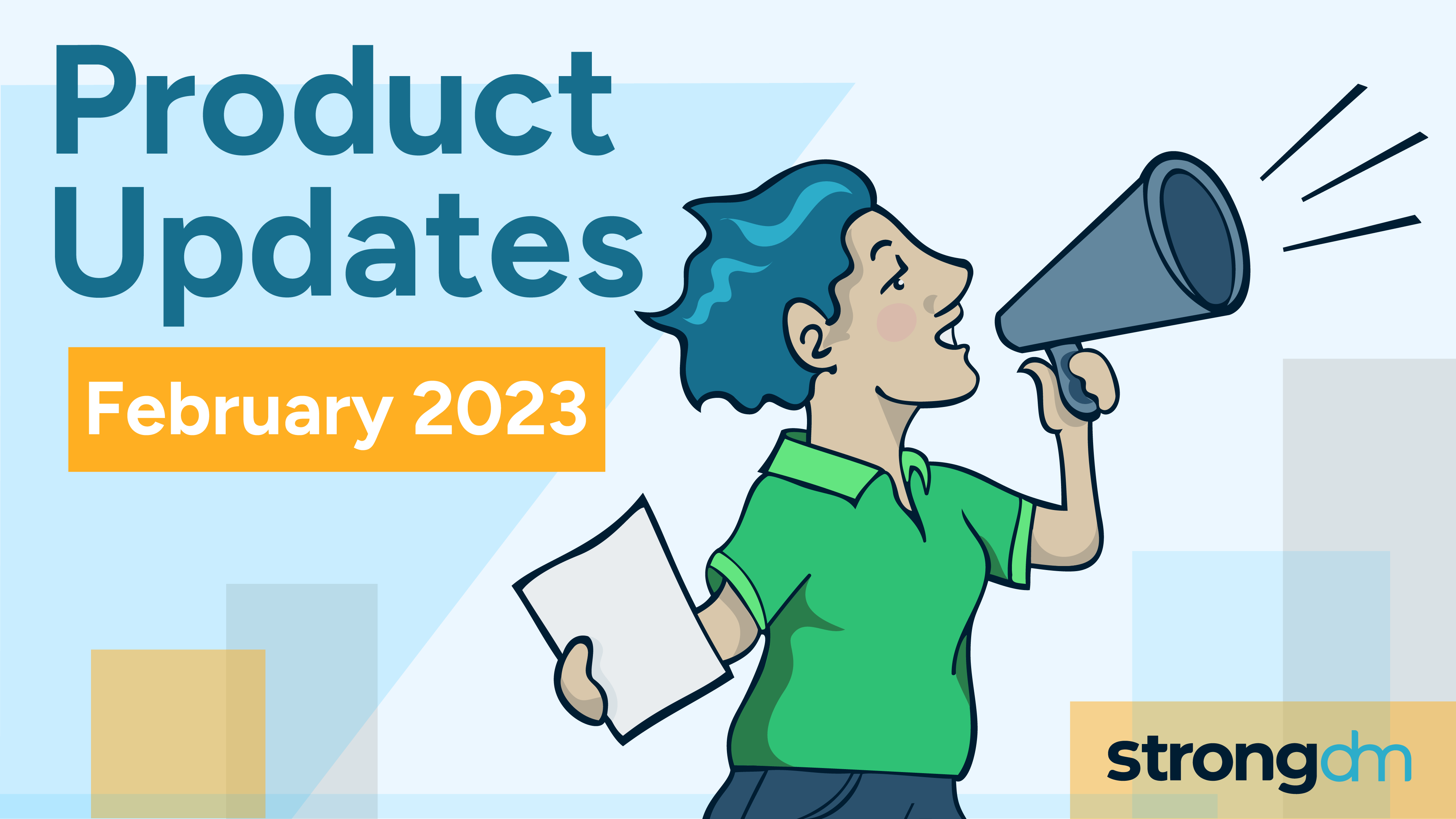

Written by
Erick BradleyLast updated on:
March 27, 2025Reading time:
Contents
Built for Security. Loved by Devs.
- Free Trial — No Credit Card Needed
- Full Access to All Features
- Trusted by the Fortune 100, early startups, and everyone in between
Increase admin productivity with shiny new metrics.
Welcome to our February product updates. Time has a way of moving quickly at StrongDM, especially when we are busy building products for the future. If only I could say the same for the minutes spent on a treadmill. For now, have a seat, grab a beverage, and check out what’s new at StrongDM.
Understand user behavior better with our added insights
You now have the power to visualize commonly asked questions around utilization to better manage and predict cost. This feature is just the beginning. We’re adding more robust reporting on our users throughout this quarter. Be on the lookout 👁).
Another Secret Store Integration is here!
We’ve made a new addition to our suite of native secret store integrations. Use StrongDM to manage privileged access to all your resources on-prem, in the cloud, or both!
You can use StrongDM to store your secrets or continue to get the investments from the vendors you already use.
StrongDM has added support for:
- Delinea Secret Server (new!)
- CyberArk Conjur
- CyberArk PAM Vault
- AWS Secrets Manager
- Azure Key Vault
- GCP Secret Manager
- HashiCorp Vault
Want to learn more? Check out our full list of release notes.
Next Steps
StrongDM unifies access management across databases, servers, clusters, and more—for IT, security, and DevOps teams.
- Learn how StrongDM works
- Book a personalized demo
- Start your free StrongDM trial

Categories:

About the Author
Erick Bradley, Product Manager Expert, has worked in the technology industry for over 15 years, in roles ranging from software integration, customer support, project management and product management. His work experience spans start-up size companies all the way through large enterprises such as GE (GE Transportation) and Allstate (Allstate Identity Protection). Curiosity and a deep love of learning are the key ingredients in Erick's outlook on work and life in general.
You May Also Like




